iPhone 6 and iPhone 6 Plus: Preliminary Results
by Joshua Ho on September 22, 2014 7:07 AM EST- Posted in
- Smartphones
- Apple
- Mobile
- iOS
- iPhone 6
- iPhone 6 Plus
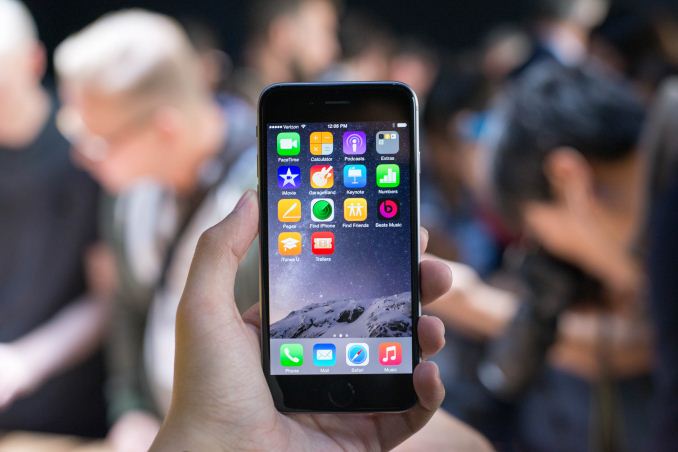
While we’re still working on the full review, I want to get out some preliminary results for the iPhone 6. For now, this means some basic performance data and battery life, which include browser benchmarks, game-type benchmarks, and our standard web browsing battery life test. There’s definitely a lot more to talk about for this phone, but this should give an idea of what to expect in the full review. To start, we'll look at the browser benchmarks, which can serve as a relatively useful proxy for CPU performance.
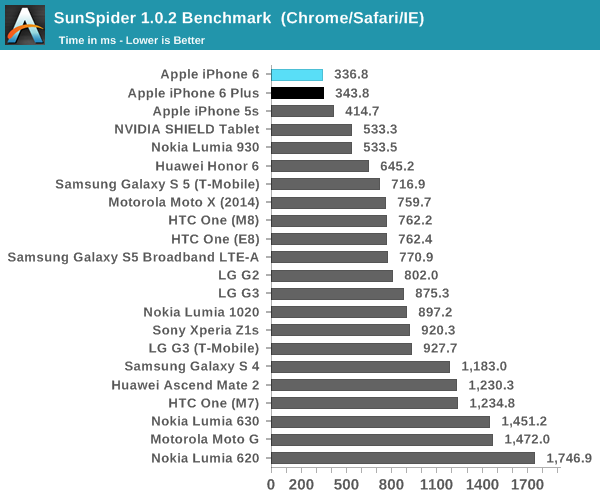
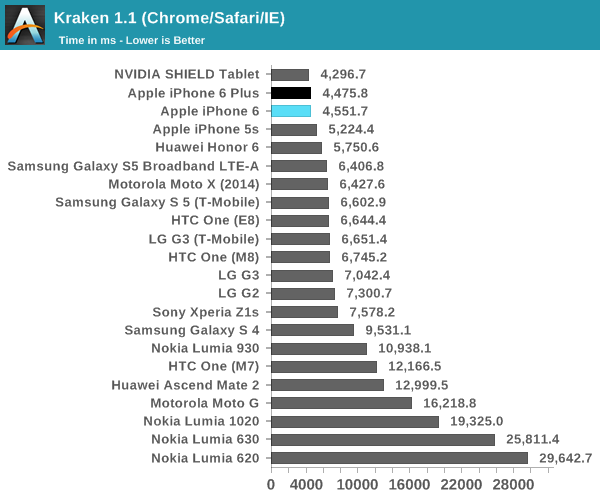
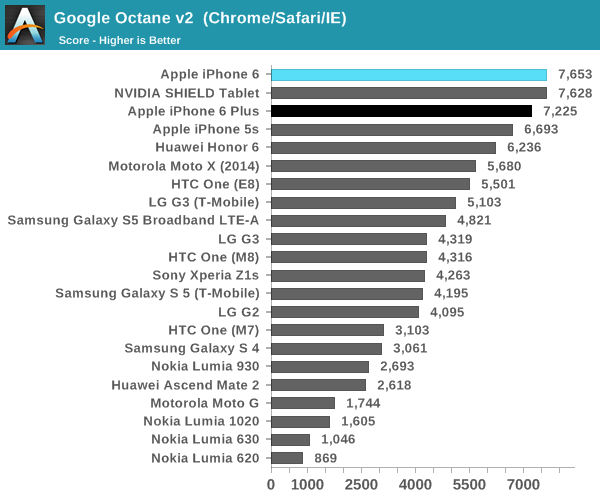
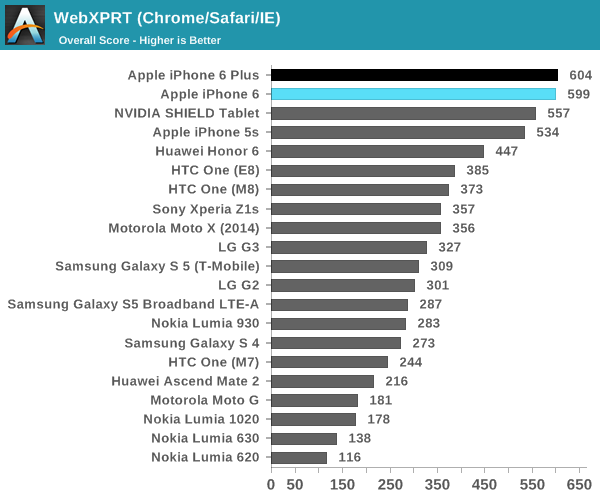
There are a few interesting observations here, as a great deal of the scaling is above what one would expect from the minor frequency bump when comparing A7 and A8. In SunSpider, we see about a 13% increase in performance that can't be explained by frequency increases alone. For Kraken, this change is around 7.5%, and we see a similar trend across the board for the rest of these tests. This points towards a relatively similar underlying architecture, although it's still too early to tell how much changes between the A7 and A8 CPU architectures. Next, we'll look at GPU performance in 3DMark and GFXBench, although we're still working on figuring out the exact GPU in A8.
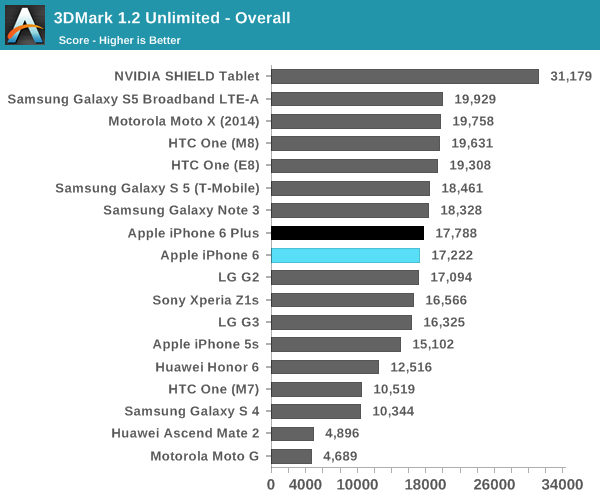
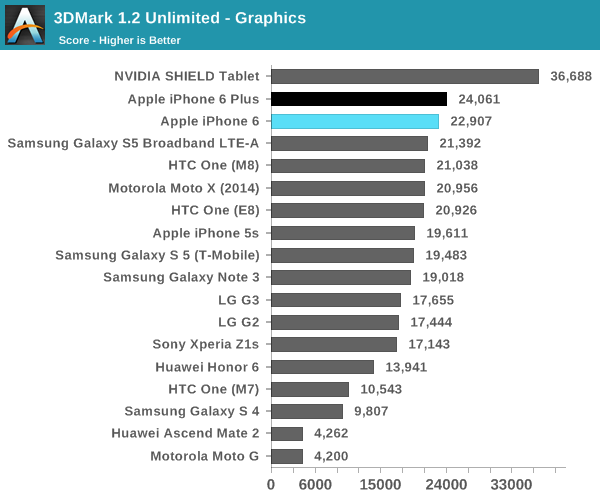
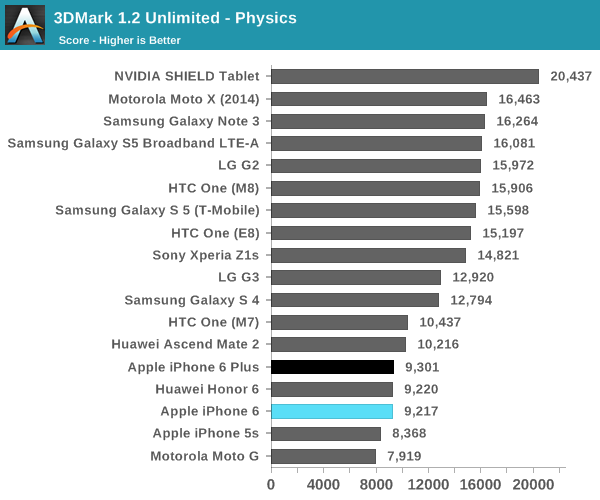
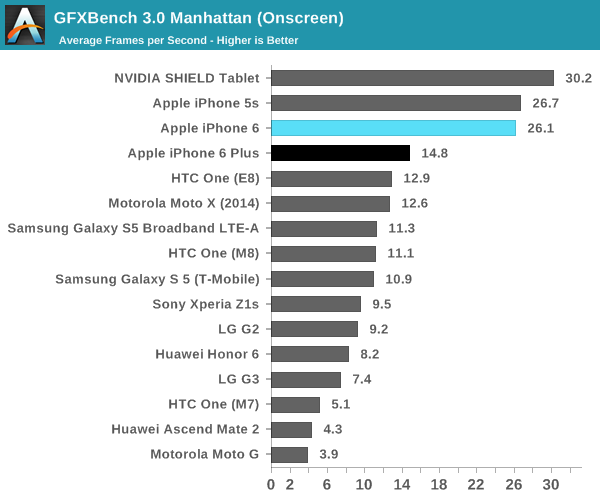
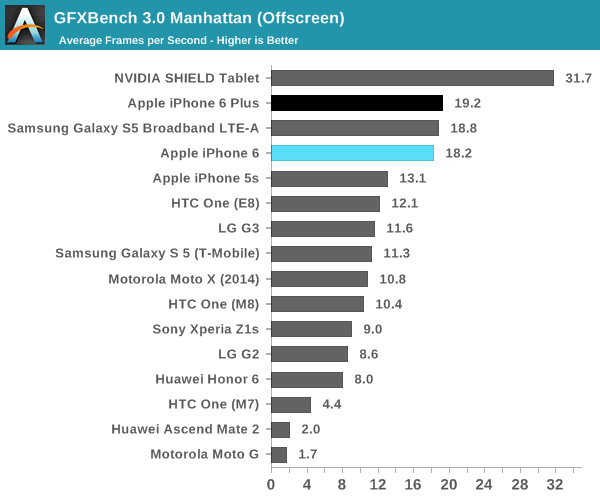
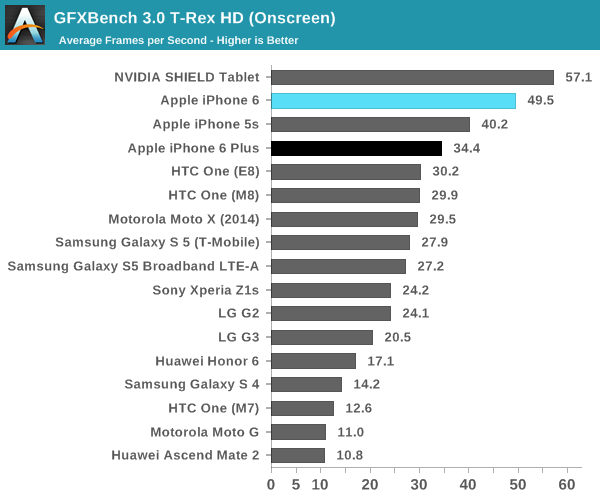
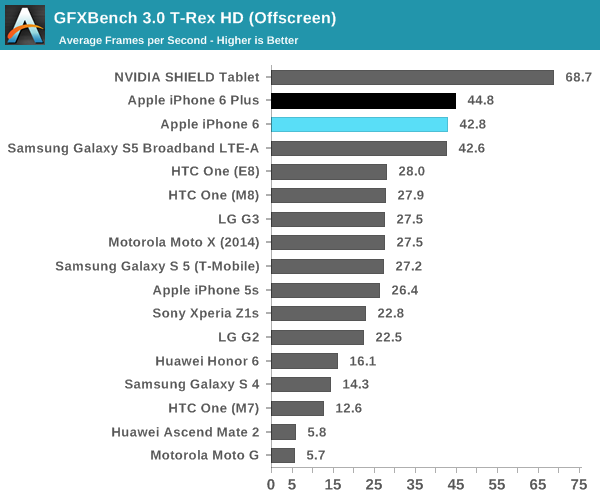
In in GPU benchmarks, we generally see a pretty solid lead over the competition for the iPhone 6/A8. It's seems quite clear that there is a significant impact to GPU performance in the iPhone 6 Plus due to the 2208x1242 resolution that all content is rendered at. It seems that this is necessary though, as the rendering system for iOS cannot easily adapt to arbitrary resolutions and display sizes. Before we wrap up this article though, I definitely need to address battery life. As with all of our battery life tests, we standardize on 200 nits and ensure that our workload in the web browsing test has a reasonable amount of time in all power states of an SoC.

As one can see, it seems that Apple has managed to do something quite incredible with battery life. Normally an 1810 mAh battery with 3.82V nominal voltage would be quite a poor performer, but the iPhone 6 is a step above just about every other Android smartphone on the market. The iPhone 6 Plus also has a strong showing, although not quite delivering outrageous levels of battery life the way the Ascend Mate 2 does. That's it for now, but the full review should be coming in the near future.










316 Comments
View All Comments
log0n - Monday, September 22, 2014 - link
Yes but the fact that there are no WP8/8.1 devices included in these tables is kinda bias by neglect.For a lot of people comparable performance is rightly or wrongly the biggest determine factor when buying a device. So when a entire class of devices unmentioned not only do the people looking for an honest comparison of ALL there options lose out but it also works to downplay the the platform to those reading it. Out of sight out of mind.
tuxRoller - Monday, September 22, 2014 - link
Win8 phones don't tend to have as good a battery life (web browsing) as android, for some reason. Though basemark tells a different story.Drumsticks - Monday, September 22, 2014 - link
I'd love to see normalized battery life for smartphones, similar to how you do with laptops. Is that possible?Bragabondio - Monday, September 22, 2014 - link
Guys for those of you saying that the article seems to make Iphone 6 better than it actually is and particularly in light of the recent site's founder move to Apple (unclear if Anand still owns Anandtech but likely as he did not said that he has sold it). Lets be fair - the test presented are typical of what the site was presenting (in terms of tests used) before Anand left. Yes, I personally felt that the Apple coverage under Anand was biased but not in the sense that any of the tests were manipulated but more in the sense of what tests were used.I always felt they were done more from the point of view of an Apple fan be-lovingly playing with its shiny new toy while trying to be objective regarding to the actual data recorded during the tests. For example, the coverage may include how fast you can open a web site but does not tell you how much the relatively smaller (4 inch until now) screen sacrifices in terms of content vs. a 5 inch (Nexus 5) or 5.7 inch (Note 3/4) phone. The default browser was always used and many times such test become more of a browser test under different platform than a device test.
Where I see Iphone 6 lagging is in terms of memory. In the full review I hope we can see tests of how many safari tabs one can open before the OS starts reloading them every time (in other words how good is multitasking under iOS 8). The same test should be replicated under Android L using Nexus 5.
Also it would be great to include in the full review comparison of Android L vs. iOS 8 of things like a) sharing content to Dropbox, Google drive, different e-mail ( i.e. default and Gmail).
b) uploading and downloading files from NAS (you can use Note 4 as a comparator)
c) comparison of what can be done in Anroid L (but not in iOS 8) and vice versa.
Marcos Stein - Monday, September 22, 2014 - link
Multitasking is better than on Android.I can run 8 or more soft synths at the same time on my ipad air connected to a controller without problems.
Apple only must add multiwindow that is in the works. Maybe ios8.1.
tuxRoller - Monday, September 22, 2014 - link
How many of those "soft synths" can you run in android?I'm assuming you have tested the same app on both devices?
davidcmal - Monday, September 22, 2014 - link
So one thing I noticed the reviewer did not mention is information about each phone. Are these with the current OS/browser level available? Or the version the phone shipped/reviewed with? I just ran Kraken/SunSpider on my N5 (ART RT). My results for SunSpider 1.0.2 were 784.3ms total and 6694.1ms Total for Kraken. As Anandtech knows for performance ART>Dalvik maybe some sort of information about that in such a heated post. Or maybe there test was with ART and I have a great N5?tuxRoller - Monday, September 22, 2014 - link
I'm not sure art would affect chrome (native) very much.davidcmal - Tuesday, September 23, 2014 - link
I am not sure, but that is where it would be good if we knew if the device scores are from initial review. Many years ago when I would go to THG they would show benchmarks for graphics card drivers. Not sure if they still do as it was early 2000s, but it seems like Anandtech might want to look at a similar article with different variations of the same device.tuxRoller - Wednesday, September 24, 2014 - link
Sure, the version of chrome would make a difference. So, that's a fair point.This is yet another reason why I wish AT would use a third party browser (my preference would be ff, but any would do) so we can actually get useful data about the hardware instead of having to factor in oem optimizations.